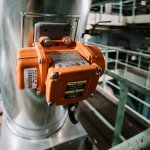How to Create a Safe Machine in the Workplace
Although your team may spend days, weeks, or even months without an accident, you should never become complacent if you want to improve workplace safety and efficiency. Safety in the workplace is essential, and there is always room for improvement-from machine guard compliance to adapting own procedures and practices.
Here are some ways to create a safe machine in the workplace:
- Identify Who Could Be Harmed & How
- Assess the Risks and Take Action
- Develop a Safety Plan with Your Employees
Interested in a custom machine for your company? Click here to learn more about our custom equipment.
Identify Who Could Be Harmed & How
In the workplace, machines are used every day that can harm an individual if they are not handled properly. Sometimes machines will have moving parts, and sometimes they will have sharp edges. It is important to identify who could be harmed and how in order to create a safe machine workplace.
Machines should always be marked with warnings so those around it know what type of risks it has. In addition, machines always need to be set up for safety so workers know where to stand and what to do before starting it up. Be sure to never let machines go unattended as this creates the opportunity for injuries or accidents.
Take Action
The most important thing to do is assess the risks and take action to make them safer. There are ways to limit problems, like installing an emergency stop button or including safety features. Your employees should always follow the manufacturer’s instructions for use and maintenance. You should also have a dedicated operator on hand who can help train others on proper machine usage in order to avoid injury.
Develop a Safety Plan with Your Employees
The majority of companies have extensive safety programs and cultures, but machinery deserves special attention since it can be deadly or result in serious injuries to personnel. In addition to environmental damage, failures can also negatively impact customers’ goodwill, which has financial implications. Based on the setting, you must be aware of industry standards for machines, monitoring devices, and equipment. It is especially common for machinery maintenance incidents, such as lock-out/tag-out failures, arc flashes during welding, or overspeed incidents during speed-control governor testing, to occur.
Trust the Experts at Air & Hydraulic Equipment, Inc.
At Air & Hydraulic Equipment, Inc., we’re here to help you with any of your industrial automation needs. We offer custom engineering, programming, fabrication, and machining. Our certified team has the knowledge to create safe machines and keep them running smoothly.










